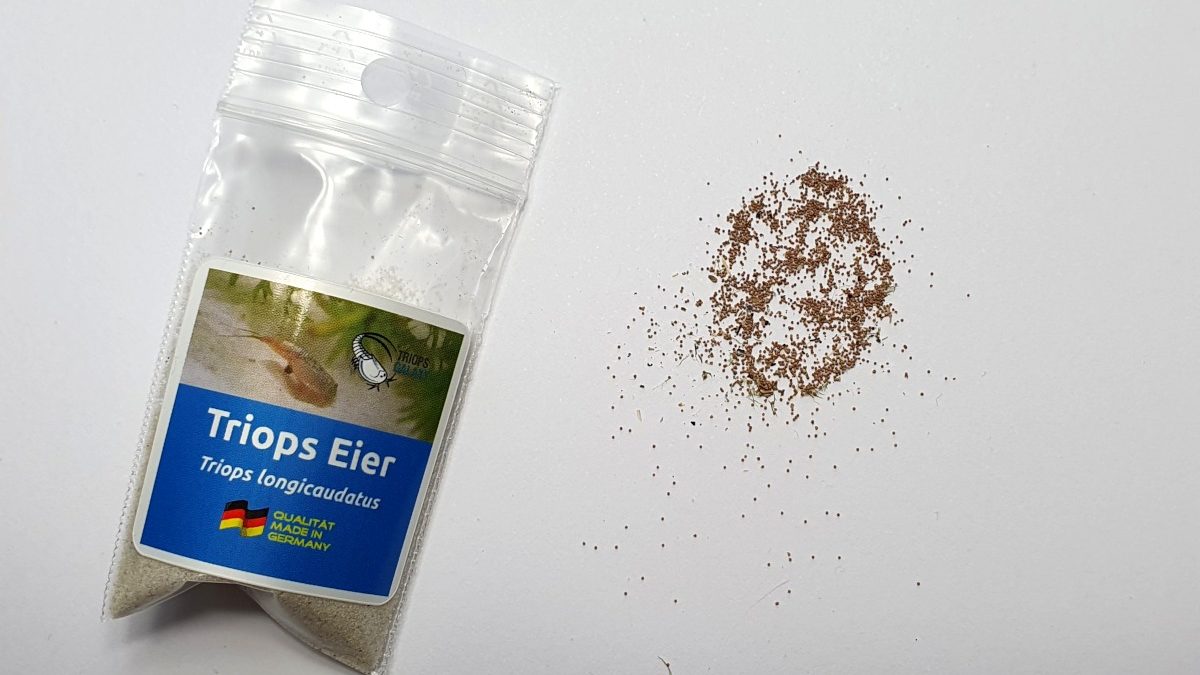Guide
How long do you have to dry Triops eggs?
If you have already bred Triops or are planning to do so soon, you will eventually reach the point where you want to dry their eggs. This process is crucial so that you can pause breeding or start again later, just like in nature, where Triops eggs survive dry periods and come back to life when it rains again. But how long do you actually have to dry Triops eggs to ensure they last and hatch reliably the next time? That’s exactly what this blog article is about.

Why do Triops eggs have to dry at all?
Triops belong to the so-called prehistoric crustaceans, which have adapted perfectly to temporary waters over millions of years. Their eggs are so-called permanent eggs or cysts that can survive extreme environmental conditions such as drought, heat or frost. In order to replicate this natural cycle in the aquarium, the eggs must be removed from the water after they have been laid and dried completely. Only then can you make them hatch again later.
The right time to dry
As soon as your Triops females have started to lay eggs in the substrate, which usually happens from the tenth to twelfth day of life, you can carefully remove the sand with the eggs. Make sure that there are no more live animals in the breeding aquarium and that the sand is well mixed to take as many eggs as possible with it.
How the Triops eggs are dried
Place the moist sand with the eggs in a shallow, air-permeable bowl. You can use a paper plate, a clean clay bowl or a shallow plastic container, for example. Spread the sand out as thinly as possible so that the moisture can escape easily. The drying process should take place at room temperature, ideally between 20 and 25 °C. Avoid direct sunlight or heaters, which could dry out the sand too quickly or overheat it.
How long does the drying process take?
It usually takes at least seven to 14 days for the eggs to dry completely. This depends on the humidity and the thickness of the sand layer. It is important that there is really no residual moisture left, as damp eggs can go mouldy or be activated prematurely, which significantly reduces their chances of survival.
A good tip: Stir the sand gently every other day during the drying time so that the lower layers also dry well. If you want to be on the safe side, you can even leave the eggs to dry for up to three weeks. After that, they are usually stable enough for storage.
A fully dried sand feels crumbly and loose, no longer clammy or lumpy. You can also put a small amount of the dried sand in a sealed freezer bag: If the inside fogs up after a few hours, moisture is still present. Then you should allow it to dry further.
Store the dry Triops eggs in an airtight container, preferably in a small tin or screw-top jar with silica gel or rice to regulate the humidity. Stored in a cool, dark and dry place, the eggs will keep for months, sometimes even years.
Drying Triops eggs – Conclusion
If you want to dry your Triops eggs successfully, you should be patient. At least one week’s drying time is mandatory, two weeks is better, so that there is really no residual moisture left. Only then can you utilise the fascinating ability of these prehistoric crustaceans to come back to life after weeks or months of drying. And that’s exactly what makes breeding Triops so exciting, isn’t it?
If you have any further questions, please have a look at Triops Galaxy, where you will not only find breeding approaches with a high hatch rate, but also lots of practical tips about the Triops world.
- Palaeontology: How lichens point the way to dinosaur fossils - 9. November 2025
- Cannibalism among Triops: a fascinating yet shocking behaviour - 8. November 2025
- Palaeontology: Researchers discover northernmost rhinoceros in Earth’s history - 28. October 2025